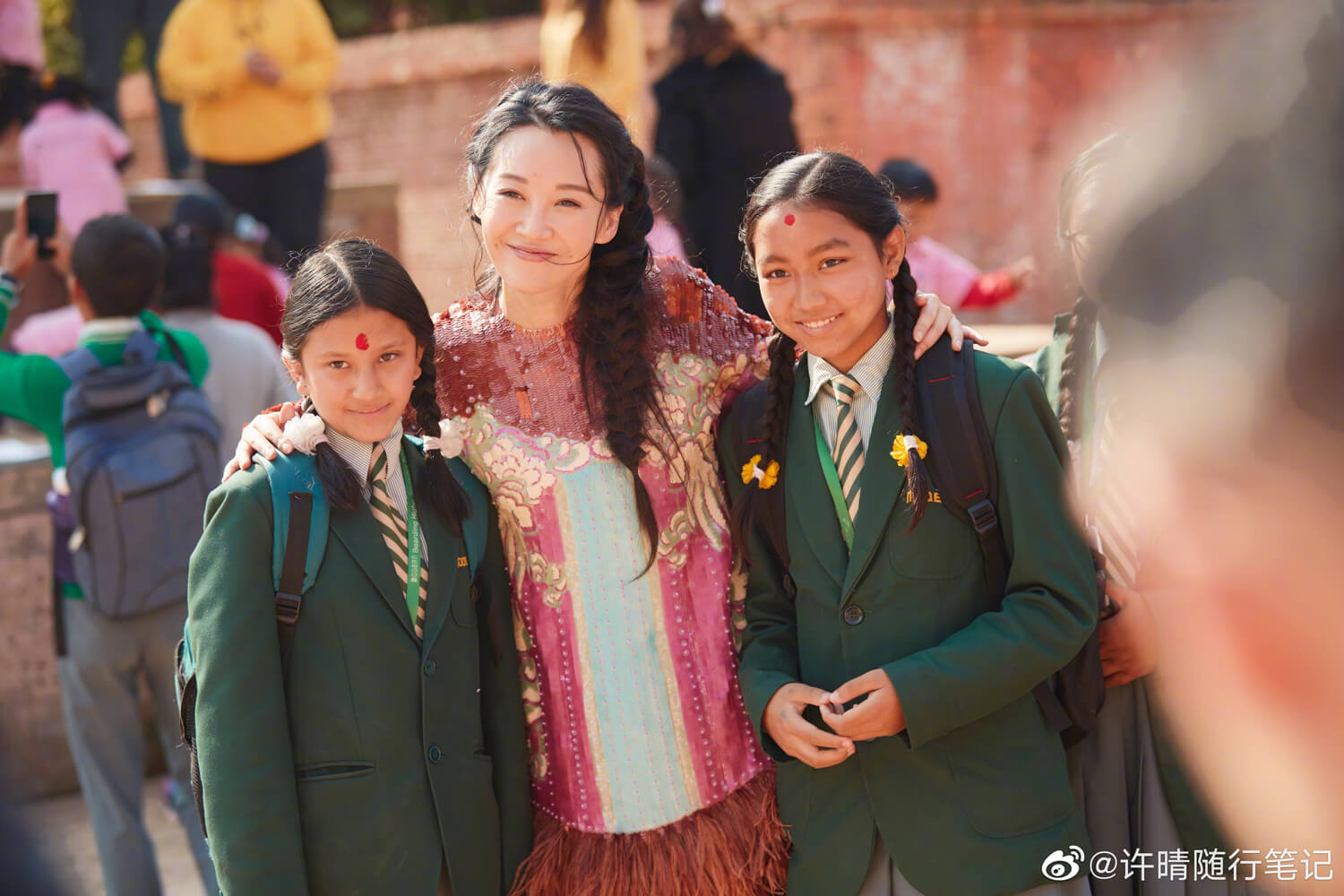Chinese tourist influx to Nepal in 2020

When Nepal chose famous Chinese actress Xu Qing to be its Goodwill Ambassador to promote Visit Nepal Year 2020 in China, she did not need much convincing. She was already in love with Nepal.
“My heart was racing when I saw the breathtaking view of the Annapurna range,” she gushed in a Weibo post from Pokhara, “This is the life I yearn for.”
Xu posted photos of herself posing in front of Machapuchre, boating on Phewa Lake, wearing a marigold garland, and taking selfies with smiling local children. Those images and videos went to 17 million of the actress’ followers on Chinese social media.
Xu Qing, who starred in her first film in 1990, has won numerous awards in the past 30 years. Many of her roles are deeply rooted in the hearts of people, which makes her hugely popular on social media. Her account on Weibo, a Twitter-like social media platform in China, has more than 17 million followers.
“It was a wise decision for Nepal to choose her as an influencer to promote tourism from China,” says Chinese art curator Justin Zhao who has lived in Nepal for seven years, and founded the Himalayan Light Art Award. “Next door China is the biggest potential market for tourism development in Nepal, and the number of Chinese tourists to Nepal is growing rapidly.”



Chinese Ambassador to Nepal Hou Yanqi has also been projecting China’s soft power in Nepal through her social media feeds to promote Visit Nepal 2020. In a Tweet on new year’s eve on Tuesday, she posted pictures of herself modelling in Patan Darbar Square and wrote: ‘True beauty always touches the deep heart. Beautiful Nepal with history, diversity and nature deserves a visit. Wish #VisitNepal2020 successful!’ And she tagged Nepal’s Tourism Minister Yogesh Bhattarai.
From January to October 2019, there were 134,281 Chinese tourists in Nepal, up nearly 10% for the same period last year. Chinese visitors account for nearly 14% of arrivals by nationality, second only to India. Numbers started going up in 2011 after Nepal announced free visas for Chinese nationals.
“Chinese Buddhists and those who enjoy adventure sports are the two most common types of Chinese tourists in Nepal,” notes Wang Ziping, who runs a restaurant in Pokhara. Indeed, many of the visitors have nothing but praise for Nepal’s natural beauty and its friendly people.
‘Although Nepal is poor, it is the happiest country in the world. You can actually see the real smiles on people's faces and feel their inner comfort. I taste a bit of my dream life here,” noted one visitor on an online post.
Adds another: ‘In the southern slopes of the Himalaya, you can see the cultural diversity of South Asia. People of different religious faiths live in peace here. They understand each other and develop together.




There are also negative comments, and deal mostly with poor infrastructure and the high airfares. Says restauranteur Wang: “Air tickets to Nepal are too expensive. The price in the peak season is more than double to similar destinations. If the price of air tickets can be reduced to about the same as that of flying to Thailand, more people would love to come.”
With a target of two million tourists in 2020, entrepreneurs have made efforts targeting potential Chinese visitors, but many say that unless the infrastructure bottlenecks like airports and highways are fixed it will be difficult to meet the target even if the volume of Chinese tourists reaches 500,000 this year.
But here in Pokhara, restaurants, hotels and paragliding companies are gearing up for the influx of Chinese tourists. At Lakeside restaurant menus are in Chinese, as are shop signs. Shopkeepers do their part by calling out “Ni hao” to welcome any Chinese-looking person.
“We have Mandarin courses so our staff can communicate with Chinese tourists,” says Prakritee Gurung, manager at Shangri-La Village Resort. Across town at Fishtail Lodge, nearly half the 24,000 guests in 2019 were Chinese tourists.

Nepal is getting ready for the first tri-nation Nepal-India-China Expo (NICE) 21-24 Feburary for joint tourism promotion. Nepal is strategically placed to be the tourism go-between for the two Asian giants.
Tourism entrepreneurs in Pokhara who have been lobbying for decades to have Pokhara International Airport built are excited that it will finally open next year, and there will be direct flights between Chinese cities and Pokhara, bypassing Kathmandu.
Pokhara became famous in China after the popular television serial Deng Feng Lai (Up in the Wind) was filmed on location here where the two protagonists took a paragliding flight. Since then, many young Chinese have flocked to Pokhara.
For Wang Ziping it was love at first sight with Pokhara. He came on a visit, and never left, deciding to open the Pokhara Restaurant on Lakeside. He says: “Pokhara International Airport is about to be finished and there will be more Chinese tourists flying directly here. I am sure business will pick up.”




